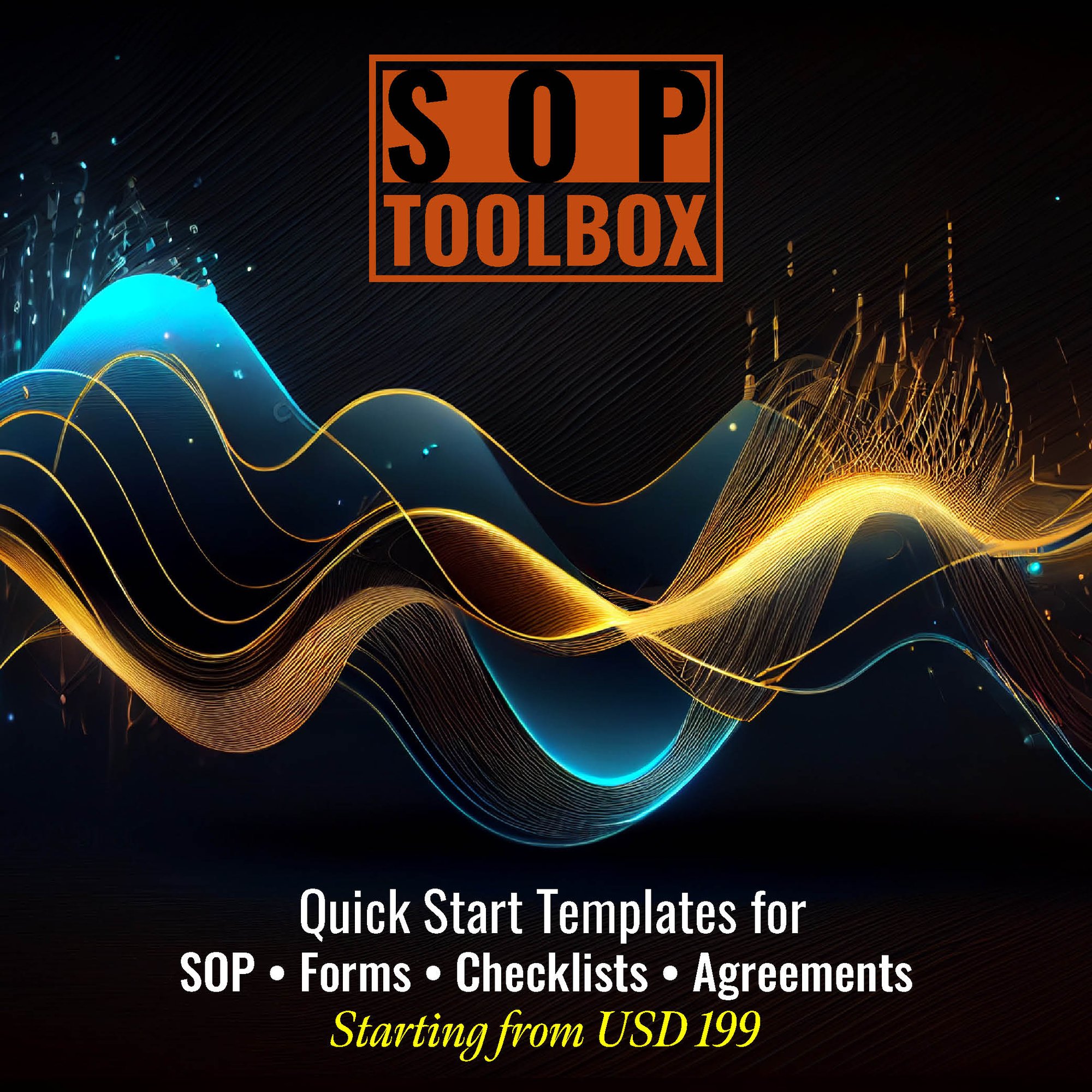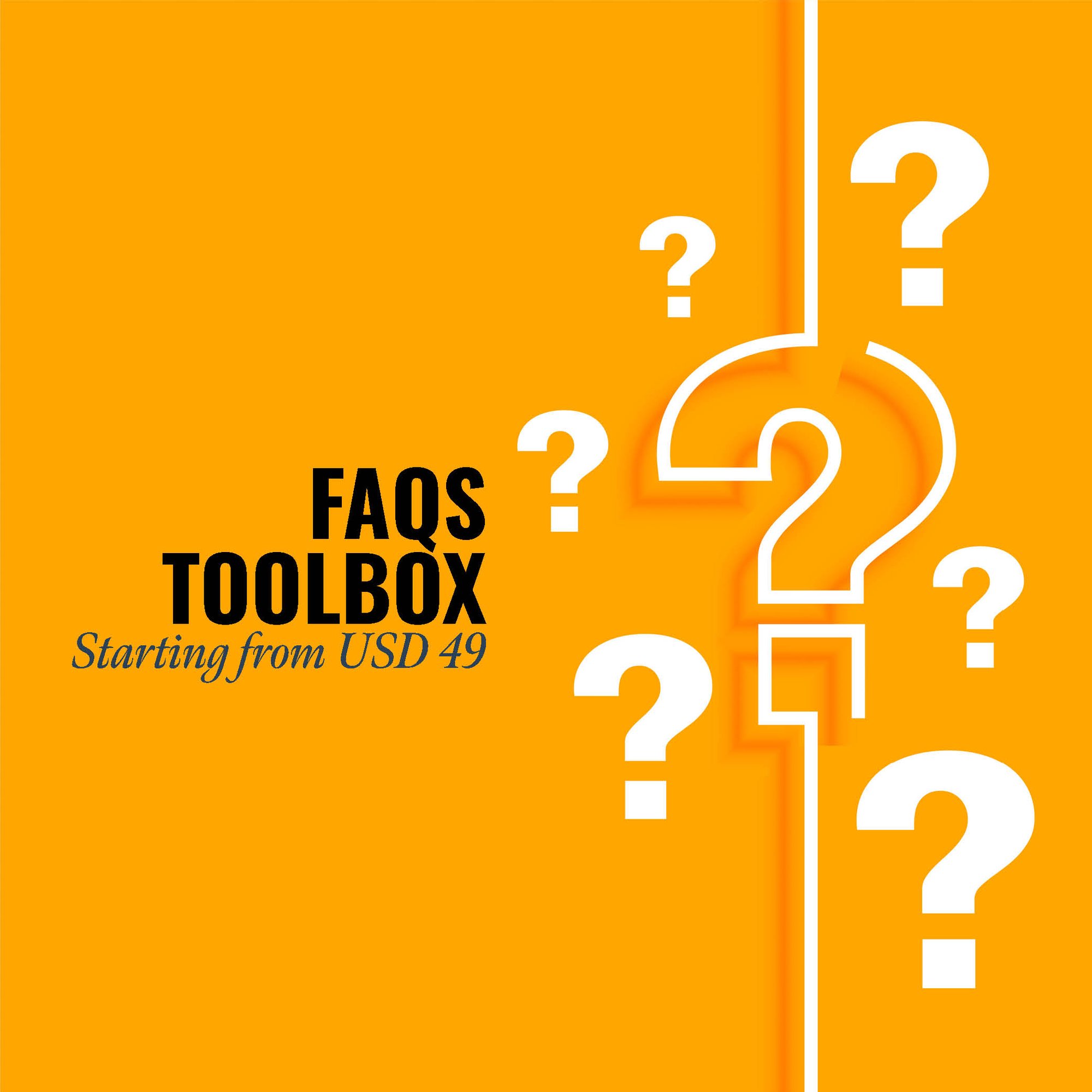The influence of an SOP (Standard Operating Procedure) Manual for All Other Telecommunications companies is profound and far-reaching, playing a pivotal role in various aspects of the industry:
-
Operational Consistency: The manual ensures that telecommunications services are delivered consistently, meeting established standards. This uniformity is crucial for customer satisfaction and maintaining a strong market reputation.
-
Efficiency: It streamlines processes, reducing errors and delays in service delivery and network management. This results in improved operational efficiency, cost savings, and a competitive edge.
-
Compliance: The telecommunications industry is heavily regulated, and the manual helps in adhering to legal and industry-specific standards, reducing legal risks and potential fines.
-
Technical Proficiency: It serves as a valuable resource for employees, providing guidelines for equipment maintenance, network optimization, and troubleshooting. This enhances technical proficiency among staff, contributing to improved service quality.
-
Customer Service: Standardized procedures for handling customer inquiries, complaints, and service installations ensure a high level of customer service, fostering customer loyalty and reducing churn.
-
Emergency Response: The manual may include protocols for handling network outages or emergencies, enabling a swift and effective response to maintain service continuity.
In conclusion, an SOP Manual for All Other Telecommunications companies exerts significant influence by ensuring operational consistency, efficiency, compliance, technical proficiency, exceptional customer service, and preparedness for emergencies. It is a critical resource for sustaining success in this rapidly evolving and competitive industry.
Services provided by this industry are
- Dial-up Internet service providers, using client-supplied telecommunications connections
- Earth stations (except satellite telecommunication carriers)
- Internet service providers, using client-supplied telecommunications (e.g., dial-up ISPs)
- On-line access service providers, using client-supplied telecommunications (e.g., dial-up ISPs)
- Radar station operations
- Satellite telemetry operations on a contract or fee basis
- Satellite tracking stations
- Telemetry and tracking system operations on a contract or fee basis
- VoIP service providers, using client-supplied telecom
CLICK HERE to download the List of SOPs Document in PDF format. Please share this document with your clients, colleagues and senior officers.
Top 50 Standard Operating Procedures (SOPs) for All Other Telecommunications
SOP-1030-001: Standard Operating Procedure for Network Infrastructure Deployment
SOP-1030-002: Standard Operating Procedure for Equipment Installation and Configuration
SOP-1030-003: Standard Operating Procedure for Cable Management and Routing
SOP-1030-004: Standard Operating Procedure for Network Security Protocols
SOP-1030-005: Standard Operating Procedure for Disaster Recovery and Business Continuity
SOP-1030-006: Standard Operating Procedure for Customer Service and Support
SOP-1030-007: Standard Operating Procedure for Telecommunication Project Management
SOP-1030-008: Standard Operating Procedure for Quality Assurance and Testing
SOP-1030-009: Standard Operating Procedure for System Integration Procedures
SOP-1030-010: Standard Operating Procedure for Telecommunication Network Monitoring
SOP-1030-011: Standard Operating Procedure for Data Center Operations and Management
SOP-1030-012: Standard Operating Procedure for VoIP Implementation and Maintenance
SOP-1030-013: Standard Operating Procedure for Wireless Network Deployment
SOP-1030-014: Standard Operating Procedure for Radio Frequency Spectrum Management
SOP-1030-015: Standard Operating Procedure for Network Capacity Planning
SOP-1030-016: Standard Operating Procedure for Telecommunication Standards Compliance
SOP-1030-017: Standard Operating Procedure for Troubleshooting and Fault Resolution
SOP-1030-018: Standard Operating Procedure for Billing and Financial Procedures
SOP-1030-019: Standard Operating Procedure for Telecommunication Vendor Management
SOP-1030-020: Standard Operating Procedure for Mobile Device Management
SOP-1030-021: Standard Operating Procedure for Unified Communications Setup and Maintenance
SOP-1030-022: Standard Operating Procedure for Emergency Response and Incident Handling
SOP-1030-023: Standard Operating Procedure for Telecommunication Policy Development
SOP-1030-024: Standard Operating Procedure for IT Security for Telecommunications
SOP-1030-025: Standard Operating Procedure for Telecommunication System Upgrades
SOP-1030-026: Standard Operating Procedure for Voice and Data Network Convergence
SOP-1030-027: Standard Operating Procedure for Remote Access Protocols
SOP-1030-028: Standard Operating Procedure for Telecommunication Audits and Assessments
SOP-1030-029: Standard Operating Procedure for Telecommunication Training Programs
SOP-1030-030: Standard Operating Procedure for Satellite Communication Operations
SOP-1030-031: Standard Operating Procedure for Internet Service Provision
SOP-1030-032: Standard Operating Procedure for Telecommunication Network Optimization
SOP-1030-033: Standard Operating Procedure for Video Conferencing Setup and Support
SOP-1030-034: Standard Operating Procedure for Network Configuration Backups
SOP-1030-035: Standard Operating Procedure for IP Address Management
SOP-1030-036: Standard Operating Procedure for Mobile Network Optimization
SOP-1030-037: Standard Operating Procedure for Telecommunication Software Updates
SOP-1030-038: Standard Operating Procedure for Telecommunication Asset Management
SOP-1030-039: Standard Operating Procedure for Wireless Site Survey and Planning
SOP-1030-040: Standard Operating Procedure for Network Performance Monitoring
SOP-1030-042: Standard Operating Procedure for Telecommunication Regulatory Compliance
SOP-1030-043: Standard Operating Procedure for Virtual Private Network (VPN) Configuration
SOP-1030-044: Standard Operating Procedure for Telecommunication Change Management
SOP-1030-045: Standard Operating Procedure for Voice Mail System Administration
SOP-1030-046: Standard Operating Procedure for Network Redundancy and Failover Procedures
SOP-1030-047: Standard Operating Procedure for Internet of Things (IoT) Connectivity
SOP-1030-048: Standard Operating Procedure for Telecommunication Capacity Upgrades
SOP-1030-049: Standard Operating Procedure for Treasury Board Approval Process
SOP-1030-050: Standard Operating Procedure for Telecommunication Documentation and Records Management
SOP ToolBox: If you are reading these lines, I am sure you are looking for Standard Operating Procedure guidelines or SOPs itself. In both the cases, searching in internet will not be yielding any great help. Because no company shares their SOP Development Process and certainly don’t share their SOP Documents. The best way to develop an SOP is creating one for yourself. At Fhyzics, we write SOPs day-in and day-out for companies across the globe including some of the Fortune 500 organisations. Our charge ranges from USD 5000 to USD 50000 depending upon the number of processes to be covered. Certainly, this is not affordable to small and mid-size organisations. Hence, we decided to create this SOP ToolBox to disseminate our 8-Step SOP Development Life-Cycle and best practices at an unbelievably low price.
I always say, writing an SOP is somewhere between art and science. So far you may be clueless on where to start and how to progress on an SOP? This will not be the case after you diligently go through this SOP ToolBox. We have summarised all our secrets here to get you started and to deliver a stunning SOP to your management.
1. Standard Operating Procedures (SOP) Manual for Accounts Department
2. Standard Operating Procedures (SOP) Manual for Finance Department
3. Standard Operating Procedures (SOP) Manual for Customer Service
4. Standard Operating Procedures (SOP) Manual for CRM Department
5. Standard Operating Procedures (SOP) Manual for Credit Department
6. Standard Operating Procedures (SOP) Manual for Treasury Department
7. Standard Operating Procedures (SOP) Manual for Human Resources (HR) Department
8. Standard Operating Procedures (SOP) Manual for Training Department
9. Standard Operating Procedures (SOP) Manual for Learning & Development Department
10. Standard Operating Procedures (SOP) Manual for Administration Department
11. Standard Operating Procedures (SOP) Manual for Front Office
12. Standard Operating Procedures (SOP) Manual for House Keeping
13. Standard Operating Procedures (SOP) Manual for Safety Department
14. Standard Operating Procedures (SOP) Manual for Security Department
15. Standard Operating Procedures (SOP) Manual for Facilities Management Department
16. Standard Operating Procedures (SOP) Manual for Vigilance Department
17. Standard Operating Procedures (SOP) Manual for Legal Department
18. Standard Operating Procedures (SOP) Manual for Information Technology (IT) Department
19. Standard Operating Procedures (SOP) Manual for Sales & Marketing Department
20. Standard Operating Procedures (SOP) Manual for Design & Engineering
21. Standard Operating Procedures (SOP) Manual for Procurement Department
22. Standard Operating Procedures (SOP) Manual for Production
23. Standard Operating Procedures (SOP) Manual for SRM Department
24. Standard Operating Procedures (SOP) Manual for Supply Chain Department
25. Standard Operating Procedures (SOP) Manual for Warehouse
26. Standard Operating Procedures (SOP) Manual for New Product Development Department
27. Standard Operating Procedures (SOP) Manual for Research and Development
28. Standard Operating Procedures (SOP) Manual for Quality Department
29. Standard Operating Procedures (SOP) Manual for Calibration Department
30. Standard Operating Procedures (SOP) Manual for Maintenance Department
The Asia Pacific captured the largest revenue share in 2019. The region is likely to attract more than half of the new mobile subscribers by 2025 as estimated by GSMA. The regional market is primarily driven by e-commerce and retailer buy-in platforms, smartphone ubiquity, and investments in 5G networks. China, Japan, and India have emerged as significant contributors to regional market growth.
According to the statistics published by Our World in Data, China and India were ranked among the top internet users worldwide with 765 million and 391 million users respectively in 2017. Furthermore, rising government initiatives on digital integration through Information Communication Technologies (ICT) are anticipated to fuel the communication network growth in the Asia Pacific. For instance, the Indian government spent over USD 600 million on the development of 100 smart city projects, where IoT plays a vital role in those cities qualifying as ‘smart cities.’
The Middle East and Africa are envisioned to witness the highest growth over the forecast period. This can be attributed to the abrupt migration of existing 2G subscribers to mobile broadband networks and the adoption of 3G as well as 4G networks by younger demographics from the outset. The rising deployment of big data solutions to track and respond to issues relating to disease outbreaks, urban planning, and monitoring air pollution levels is anticipated to contribute to the substantial progression of communication networks in the region.
North America is expected to account for a considerable revenue share in the years to come on account of high consumer spending on mobile phones, coupled with the early adoption of digitized technologies. The current launch of 5G in South Korea, Australia, Germany, the U.K., and the U.S. is anticipated to drive the market. According to GSMA, 20.0% of communication connections worldwide will incorporate 5G networks by 2025 with a strong presence in North America and Europe.
- Iheartmedia Capital II LLC
- Goodman Networks Incorporated
- Multimedia Commerce Group Inc
- Aegis Media Americas LLC
- Oplink Communications LLC
- Global Eagle Entertainment Inc
- LTS Buyer LLC
- Cogent Cmmunications Group Inc
- Intelsat US LLC
- Itron Networked Solutions Inc
- Telcos have to decentralize the purchasing and decision power, both internally and externally, because of the essential agile reconfiguration of the cloud.
- With the availability of new technologies, the variety and quality of services from telecom companies and internet service providers (ISP) are increasing, profit margins are decreasing, and the lines between telecom companies and technology vendors are blurring. Hence, telcos have to take a fresh look at the level of ICT innovation and adapt their organization to digital transformation by creating strong cross-functional interfaces and by seeking tools for maintaining organizational flexibility.
- With millions of subscribers, a variety of new products, bundled and customized solutions, the operational support services like service configuration, order fulfillment, customer care, and billing are becoming increasingly complex. Hence, the cost of handling these operations require resources and different tools, thus, increasing the financial overhead.
- Telecommunication providers need to upgrade their IT and connectivity infrastructure and focus on providing data and voice services that are high quality, reliable, and affordable. Security of the networks has become a major priority for the telcos and they are facing challenges with the emergence of new threats that are powered by new technologies. So, a number of operational and technical innovations are needed to meet customer expectations of complete system security from the network till the device level.
- One more challenge waiting in the wings for telcos and ISPs is the impact of the Internet of Things (IoT) that is leading to explosive growth in the connected devices. This growth is generating billions and trillions of new data sources and thus, it is expected that this growth will push the data to be handled by networks to zettabytes per year.
- The Telecom Regulatory Authority of India (TRAI)
https://www.trai.gov.in/ - Federal Communications Commission (FCC)
https://www.fcc.gov/ - National Cable & Telecommunications Association (NCTA)
http://www.ncta.com/
This SOP manual briefly explains the process, factors, services, and major companies in All Other Telecommunications industry. The global telecom services market size was valued at USD 1.74 trillion in 2019 and is expected to grow at a compound annual growth rate (CAGR) of 5.0% from 2020 to 2027. Rising spending on wireless communication infrastructures due to the shift in customer inclination towards cloud-based technology and mobile devices is one of the key factors driving this industry. An increasing number of mobile subscribers, soaring demand for high-speed data connectivity, and growing demand for value-added managed services are the other potential factors fueling the market growth. The global communication network has undoubtedly been one of the prominent areas for continued technological advancements over the past few decades. The industry’s product offering evolved in the late 19th century from only voice and visual signals in terms of facsimile or telegraphs over wired infrastructure to the current scenario of exchanging audio, video, and text content over numerous wireless infrastructures. The market for telecom services has also witnessed significant improvements in data speeds, from Global System for Mobile communications (GSM) and Code Division Multiple Access (CDMA) to Third Generation (3G), Fourth Generation (4G), and now the commercialization of Fifth Generation (5G) networks. The advent of data connectivity has made possible the reduction in the duration of transferring large chunks of data from days to hours and now to a few seconds.
Research By : Mohammed Ijas
Keywords: sop, manual, policy, sop meaning, sop full form, standard operating procedure, full sop, user manual, sop is, user guide, instruction manual, owners manual, sample sop, operators manual, sop example,standard operating procedure examples, abbreviation sop, standard operating procedure sample, milk sop, sop document, sop process,m manual, operating procedures, operating process, sop meaning in hindi, standard procedure, sop standard operating procedure, sop top, sop writing, standard operating procedures manual, sop meaning in english, sample sop for mba, standard operating procedures examples in office, product manual, sample sop for ms, maintenance manual, sop security, sop in research, sop in business, whats sop, standard of operation, sop set, sop procedure, sop marketing,sop training, sop hotel, sop, sop meaning business, sop form, sba sop,sop software, help manual, sop it, army sop, company sop, sop sap, o m manual, standard operating procedure examples for small business, shop manual, sop manual, sop meaning in business, purpose of standard operating procedures, sop full meaning, standard operating procedure meaning, sop military, sop standard, sop meaning medical, hr sop, sop production, purpose of sop, sop management, warehouse sop, sales sop, sop pharma, sop manufacturing, sop creation, sop laboratory, ms sop, sop full form in hindi, sop front office, sop customer service, sop online, gmp sop, sop purchasing, sop pharmacy, sop safety, sop for project management,sample sop for australian student visa, sop meaning in tamil, sop system, best sop, sop up, sop in english, sop for mechanical engineering, sop for university,sop in malay, sop lab, sop for business analytics, sop model, sop in pharmacy, developing sops, standard operating procedure examples manufacturing, sop full form in retail,sop full form in medical, sop engineering, sop application, writing standard operating procedures, procurement sop, sop maintenance,standard operating procedure nhs, sop clinical trial, sop operations,sop in construction, operating procedures manual, standard operating procedure ppt, standard procedure meaning, sop ppt, a sop, sop document meaning, sop def, sop full form in safety, sop quality control, sop for college, sop quality, sop service, types of sop, sop for engineering management, sop document sample, benefit of sop, preparing sop, standard operating procedure in hindi, sop for visa, sop compliance, sop protocol, sop aviation, sop meaning in chat, standard operating process, sop meaning military, sop for business management, standard operating procedure software, sop list, sop medical, sop logistics, sop project, sop for it department, sop call center, standard work procedures, sba sop 50 10, sop meaning in logistics, standard operating procedure laboratory, test sop, sop sample for ms, drafting sop, sops meaning in tamil, sops meaning in telugu, sop automotive, standard operating system, sop cafe, sop slideshare, sop ap, sop bank, sop in retail, creating standard operating procedures, sop admin, document control sop, pharmaceutical sop,sop in pharmaceutical industry, statement of purpose harvard, sop examples for ms, quality assurance sop, sop in clinical research, nursing sop, sop for transportation, sop policies, sops are specific to a process, sop in hindi, standard operating procedure for warehouse picking, master sop, list of sop for pharma, pharmaceutical sop examples, types of standard operating procedures, retail sop, sample sop for ms in mechanical engineering, standard operating protocol,sop supply chain, system operating procedure, sop rules, example of sop in research, sop in food industry, sop for international business management, sop for hospitality management, sop for hr department, army sop example, sop standard operating, office sop, hr standard operating procedures, preventive maintenance sop, sop for purchase department, human resources sop, fire department sops, information technology sop, operating procedure example, administration sop,sop for retail store, indian sop, construction management sop, sop hotel front office, example sop document, standard and procedures,working sop, sop for maintenance department, sop hrd department,sop full form in hotel industry, sop full, sop for human resource management, laboratory sop examples, standard operating procedure for quality control, sop for ms in mechanical engineering, sop meaning army, security standard operating procedures, sop machine, sample sop for internship, sop for hotel management, sample sop for masters, qa sop, developing standard operating procedures, standard operating procedure document, product recall sop, marketing statement of purpose, it standard operating procedures, equipment sop, sop purpose example, sop shipping, sop for sales and marketing,converting pos to sop, workshop sop, standard operating procedure manufacturing, digital marketing standard operating procedures, following standard operating procedures, sop ki full form, sop for nursing procedures, an sop, purchase sop for manufacturing company, sop a, statement of purpose for mba marketing, full meaning of sop, sop for research internship, research sop sample,vendor qualification sop, sop purchasing and receiving, sop meaning in visa, sop for admission, standard operating procedure medical office, sop in industry, sop sales marketing, navy sop, project management standard operating procedures, sop it support, standard operating manual, security operating procedures, statement of purpose for international business, procurement standard operating procedures, communication sop, sop full form in pharma, minimum sop, sop health and safety, product sop, sop for marketing department, sop in medical terms, sales standard operating procedure, sop purchase order, department sop, customer service standard operating procedures, clinical sop, marketing standard operating procedure, sop standard operating procedure example, construction standard operating procedures, standard of operations procedures manual sample, sop for facility management, sop full form in education, standard operating procedure in food industry, visa sop,sop for business administration, company sop meaning, sop work, sop operating procedure, sop for summer internship in engineering sample, general administration sop, sop for administrative duties.
Our SOP Templates’ clients are from the following States and Countries:
Alabama, Alaska, Arizona, Arkansas, California, Colorado, Connecticut, Delaware, Florida, Georgia, Hawaii, Idaho, Illinois, Indiana, Iowa, Kansas, Kentucky, Louisiana, Maine, Maryland, Massachusetts, Michigan, Minnesota, Mississippi, Missouri, Montana, Nebraska, Nevada, New Hampshire, New Jersey, New Mexico, New York, North Carolina, North Dakota, Ohio, Oklahoma, Oregon, Pennsylvania, Rhode Island, South Carolina, South Dakota, Tennessee, Texas, Utah, Vermont, Virginia, Washington, West Virginia, Wisconsin, Wyoming.
Afghanistan, Albania, Algeria, Andorra, Angola, Antigua and Barbuda, Argentina, Armenia, Australia, Austria, Azerbaijan, Bahamas, Bahrain, Bangladesh, Barbados, Belarus, Belgium, Belize, Benin, Bhutan, Bolivia, Bosnia and Herzegovina, Botswana, Brazil, Brunei Darussalam, Bulgaria, Burkina Faso, Burundi, Cabo Verde, Cambodia, Cameroon, Canada, Central African Republic, Chad, Chile, China, Colombia, Comoros, Congo (Republic of the), Costa Rica, Croatia, Cuba, Cyprus, Czech Republic (Czechia), Democratic People’s Republic of Korea (North Korea), Democratic Republic of the Congo, Denmark, Djibouti, Dominica, Dominican Republic, Ecuador, Egypt, El Salvador, Equatorial Guinea, Eritrea, Estonia, Eswatini, Ethiopia, Fiji, Finland, France, Gabon, Gambia, Georgia, Germany, Ghana, Greece, Grenada, Guatemala, Guinea, Guinea-Bissau, Guyana, Haiti, Honduras, Hungary, Iceland, India, Indonesia, Iran, Iraq, Ireland, Israel, Italy, Jamaica, Japan, Jordan, Kazakhstan,Kenya, Kiribati, Kuwait, Kyrgyzstan, Lao People’s Democratic Republic (Laos), Latvia, Lebanon, Lesotho, Liberia, Libya, Liechtenstein, Lithuania, Luxembourg, Madagascar, Malawi, Malaysia, Maldives, Mali, Malta, Marshall Islands, Mauritania, Mauritius, Mexico, Micronesia (Federated States of), Moldova, Monaco, Mongolia, Montenegro, Morocco, Mozambique, Myanmar (Burma), Namibia, Nauru, Nepal, Netherlands, New Zealand, Nicaragua, Niger, Nigeria, North Macedonia (formerly Macedonia), Norway, Oman, Pakistan, Palau, Panama, Papua New Guinea, Paraguay, Peru, Philippines, Poland, Portugal, Qatar, Republic of Korea (South Korea), Republic of the Congo, Romania, Russian Federation (Russia), Rwanda, Saint Kitts and Nevis, Saint Lucia, Saint Vincent and the Grenadines, Samoa, San Marino, Sao Tome and Principe, Saudi Arabia, Senegal, Serbia, Seychelles, Sierra Leone, Singapore, Slovakia, Slovenia, Solomon Islands, Somalia, South Africa, South Sudan, Spain, Sri Lanka, Sudan, Suriname, Sweden, Switzerland, Syrian Arab Republic (Syria), Tajikistan, Thailand, Timor-Leste, Togo, Tonga, Trinidad and Tobago, Tunisia, Turkey, Turkmenistan, Tuvalu, Uganda, Ukraine, United Arab Emirates, United Kingdom of Great Britain and Northern Ireland, United Republic of Tanzania, United States of America, Uruguay, Uzbekistan, Vanuatu, Venezuela, Viet Nam, Yemen, Zambia, Zimbabwe.
Fhyzics supports organisations in developing the following documentations:
Standard Operating Procedures (SOPs), Work Instructions, Policies and Procedures, Process Flow Diagrams, Job Descriptions, Training Manuals, Employee Handbooks, Compliance Guidelines, Quality Assurance Manuals, Health and Safety Procedures, Risk Management Plans, Business Continuity Plans, Internal Audit Procedures, Incident Reporting Forms, Performance Management Guidelines, Change Management Procedures, Vendor Management Guidelines, Customer Service Protocols, IT Security Policies, IT Support Documentation, Disaster Recovery Plans, Operational Checklists, Data Management Policies, Confidentiality Agreements, Non-Disclosure Agreements, Employee Onboarding Procedures, Employee Exit Procedures, Performance Appraisal Forms, Employee Code of Conduct, Conflict Resolution Procedures, Product Development SOPs, Supply Chain Management Guidelines, Procurement Guidelines, Inventory Management SOPs, Shipping and Receiving Procedures, Production Scheduling SOPs, Maintenance Procedures, Equipment Calibration Documents, Environmental Compliance Documentation, Sustainability Policies, Customer Feedback Forms, Marketing Strategies, Advertising Guidelines, Brand Management Guidelines, Product Packaging SOPs, Laboratory Testing Procedures, Regulatory Compliance Documentation, Tax and Accounting Procedures, Contract Management Procedures, Legal Compliance Guidelines, Financial Reporting Procedures, Budgeting Procedures, Internal Control Procedures, Fraud Prevention Policies, Asset Management Guidelines, Purchase Order Procedures, Sales and Distribution Guidelines, Client Contracts, Customer Return Policies, Internal Communication Protocols, Vendor Evaluation Forms, Product Safety Standards, Workplace Health and Safety Standards, Public Relations Procedures, Social Media Management Guidelines, Crisis Management Plans, Employee Grievance Procedures, Privacy and Data Protection Policies, Digital Transformation Guidelines, Innovation Management Procedures, Continuous Improvement Guidelines, Strategic Planning Documents, Corporate Social Responsibility (CSR) Guidelines, Audit Trails and Records, Employee Training and Development Records, Succession Planning Documents, Talent Acquisition Procedures, Team Collaboration Protocols, Employee Benefit Plans, Workplace Diversity Guidelines, Time and Attendance Tracking, Payroll Procedures, Employee Leave Policies, Conflict of Interest Policy, Emergency Response Procedures, Environmental Impact Assessment Procedures, Transportation and Logistics Procedures, Inventory Control Forms, Warehouse Management Guidelines, Product Lifecycle Management SOPs, Customer Satisfaction Surveys, Third-Party Risk Assessment Guidelines, Technology Adoption Policies, Software Licensing Guidelines, Security Incident Response Procedures, Supply Chain Risk Management Policies, Product Recall Procedures, Food Safety Guidelines, Employee Wellness Programs, Workplace Ergonomics Guidelines.






.jpg?width=645&height=337&name=Standard%20Operating%20Procedure%20-%20SOP%20ToolBox%20(1).jpg)











